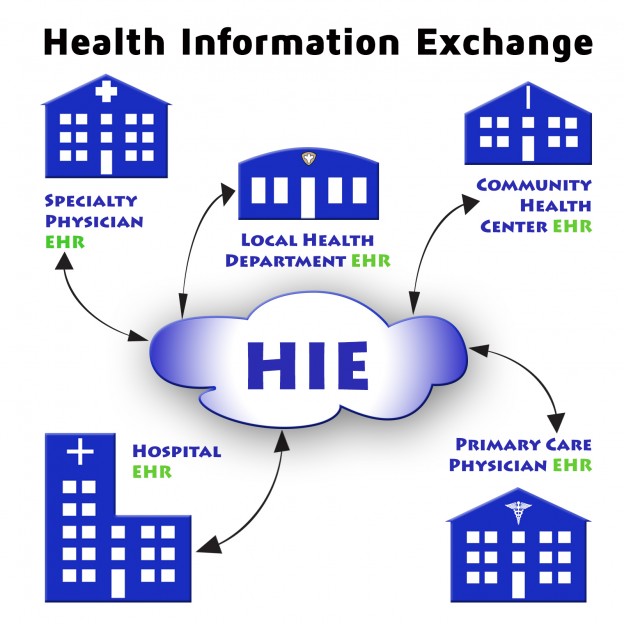Posted By Ashok Mathur On August 5, 2015
What is Health Information Exchange and Why is it Important for EHR use?

Electronic Health Records (EHRs) have become a very important and integral part of the healthcare system. Despite the initial hesitation to switch to the EHR, overwhelming majority of organizations which have switched to EHR cannot imagine going back to paper. EHRs improve efficiency and increase reimbursements while improving patient care. As providers become more fluent with the technology, EHRs can help physicians with decision making and influence the way a patient is treated.
In our national journey to transform healthcare, Health Information Exchange (HIE) is part of a federal EHR Meaningful Use (MU) standard. The idea is that all community providers (public health, private clinics, hospitals etc.) will connect their EHR to HIE. But what exactly is a HIE?
In a nutshell HIE is a hub which allows the relevant parties to share information electronically rather than via old fashioned paper fax. The image displayed above shows how all clinics can connect and share patient information through the HIE.
All EHRs connected to a HIE can share information via federally defined standards of CCR (Continuity of Care Record) and CCD (Continuity of Care Document). This is the standard which all federally certified EHRs must follow.
Any federally certified EHR which is connected through the HIE can (if permitted) receive/send information between the EHR and the HIE. Thus, the provider can send and receive electronic information with any community provider which is connected to the HIE. Timely information received (e.g. a patient discharge summary from a community hospital), after review by local health department staff, can be brought into a patient’s chart as electronic data elements. This could further influence a patient’s care and:
- Save time by avoiding re-admissions
- Get away from dealing with paper and faxes
- Save money by avoiding duplicate testing
- Improve diagnoses
- Potentially save lives by avoiding medication errors.
- Improve public health
As Stage 2 of Meaningful Use gets deployed, HIEs become pivotal game changers. Without HIEs, no EHR can be interoperable and interoperability is the driving force of Stage 2 and Stage 3 MU. Therefore, no eligible provider (EP) will qualify for their stage 3 MU incentives. “Technology and data play an increasingly important role. EHRs certainly need to be connected to a Health Information Exchange” said Dr. Robin Cummings, former Medicaid Director, NC Department of Health & Human Services.
In a recent ONC news release, Karen DeSalvo, M.D., M.P.H., M.Sc., National Coordinator for health IT is quoted, “As we move beyond [EHR] adoption to a learning health system where information is available when and where it matters most, it is important to ensure greater care coordination at the community level.” To emphasize the importance of HIE’s role, the Office of the National Coordinator for Health Information Technology (ONC) granted $38 million to, in part:
- Expand the adoption of HIE technology, tools, and services
- Facilitate and enable the send, receive, find, and use capabilities of health information across organizational, vendor, and geographic boundaries
- Increase the integration of health information in interoperable health IT to support care processes and decision making
If your EHR system is not federally certified meeting the interoperability requirement for certification, or is purposefully blocking the exchange of information, you will not achieve maximum benefits from the EHR or a HIE, nor will you receive the incentive payout. Challenge your vendor or find a new EHR because “we’re about two decades behind the banking industry and we’ve got to catch up. We’ve just got to do it” says Cummings.